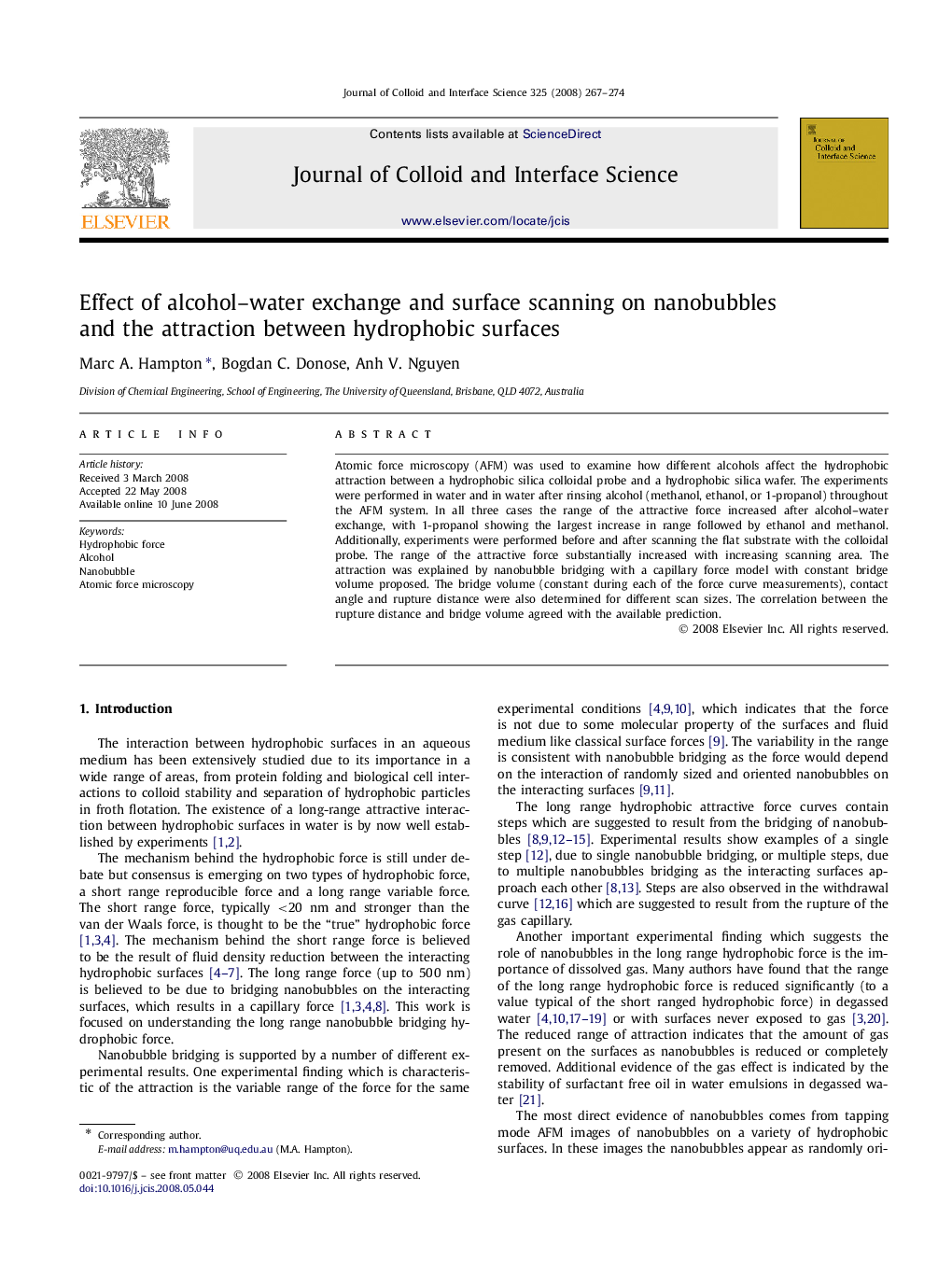| Article ID | Journal | Published Year | Pages | File Type |
|---|---|---|---|---|
| 611069 | Journal of Colloid and Interface Science | 2008 | 8 Pages |
Atomic force microscopy (AFM) was used to examine how different alcohols affect the hydrophobic attraction between a hydrophobic silica colloidal probe and a hydrophobic silica wafer. The experiments were performed in water and in water after rinsing alcohol (methanol, ethanol, or 1-propanol) throughout the AFM system. In all three cases the range of the attractive force increased after alcohol–water exchange, with 1-propanol showing the largest increase in range followed by ethanol and methanol. Additionally, experiments were performed before and after scanning the flat substrate with the colloidal probe. The range of the attractive force substantially increased with increasing scanning area. The attraction was explained by nanobubble bridging with a capillary force model with constant bridge volume proposed. The bridge volume (constant during each of the force curve measurements), contact angle and rupture distance were also determined for different scan sizes. The correlation between the rupture distance and bridge volume agreed with the available prediction.
Graphical abstractAFM tapping mode height image (5×5 μm5×5 μm with 20 nm height scale) of octanol esterified silica in water after propanol–water exchange.Figure optionsDownload full-size imageDownload as PowerPoint slide
